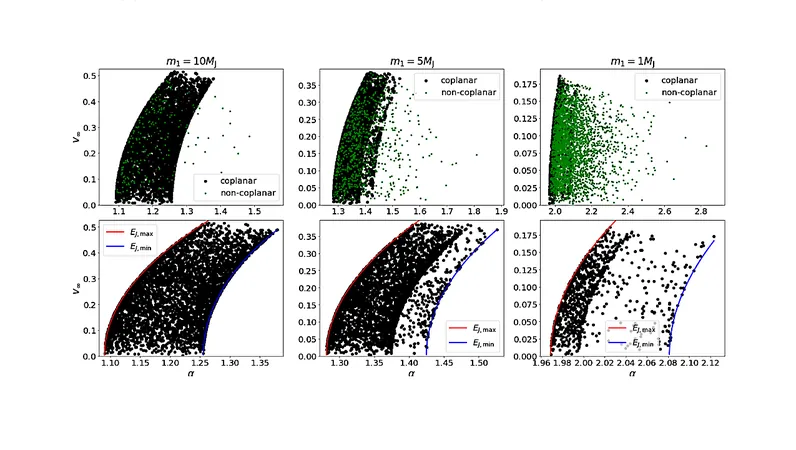
Revolutionary Sound Wave Technology Promises Quicker Healing and Stronger Tissues!
2025-08-28
Author: Yu
Unlocking the Power of Sound for Medical Innovations
In a groundbreaking discovery, researchers at McGill University have unveiled an innovative method to enhance engineered living materials using sound vibrations. This research reveals that by gently vibrating cell-rich gels during their formation, scientists can manipulate the final material's strength with unprecedented precision.
Transforming Wound Care with Simple Vibrations
The implications of this discovery are immense, particularly in emergency medicine and wound care, where rapid bleeding control and effective tissue implants are critical. Not only does this technique allow for tunable materials, but it does so without altering their chemistry or harming surrounding tissues—a significant leap in medical technology.
Vibrations Tested on Blood Clots: A Closer Look
Led by Aram Bahmani, a postdoc from Yale conducting research at McGill, the team employed a speaker-driven platform to apply precise vibrations to various cell-laden gels, including whole-blood clots and plasma gels enriched with fibroblasts. Their research spanned multiple soft materials commonly used in medical settings.
How It Works: The Magic of Mechanic Agitation
The team discovered that variations in vibration amplitude and frequency significantly influenced cell organization within the gels. By manipulating how cells are dispersed in three-dimensional space, they could tailor the material's mechanical properties, resulting in either stronger or softer structures at will.
Safer Than Ultrasound: A Novel Approach
Unlike previous techniques that depended on ultrasound or magnetic fields—which could potentially harm tissues—this new method utilizes mild mechanical agitation. This non-invasive strategy allows researchers to adjust material properties without introducing harmful chemicals or foreign particles, paving the way for safer clinical applications.
Strengthening Clots: Results Speak for Themselves
The study revealed that specific vibration settings could make blood clots stiffer and more resilient, essential for effectively sealing wounds. This dynamic capability opens the door for customized treatments, allowing clinicians to prepare clots that either resist breakdown in emergencies or dissolve more readily in controlled therapies like those for ischemic strokes.
Future Applications: A New Era for Medical Devices
Imagine a world where doctors can adjust the properties of blood clots right at the bedside! This vibration technique holds promise for integration into dressings or surgical tools, offering a tailored approach to clot management during critical medical procedures. Moreover, it can aid tissue engineers in producing scaffold gels tailored to specific cellular needs.
Challenges Ahead: Planning for Clinical Translation
While this research presents exciting possibilities, translating these findings into clinically usable tools will require careful design. Devices must be miniaturized, portable, and adaptable to various tissues to ensure safety and effectiveness across different medical scenarios. Human trials will also be crucial to confirm the long-term safety of these vibrations.
A Bright Future for Tissue Engineering and Wound Care
With potential applications extending beyond just wound care to tissue regeneration, the McGill team’s innovative approach could redefine how we use technology in medicine. As we advance, understanding the interplay between vibration and other medical treatments will be vital, ensuring that this flexible technique benefits a wide range of treatment scenarios.
Published in Advanced Functional Materials, this study represents a leap towards creating smarter, safer materials in medicine, promising a future where sound waves could save lives.




 Brasil (PT)
Brasil (PT)
 Canada (EN)
Canada (EN)
 Chile (ES)
Chile (ES)
 Česko (CS)
Česko (CS)
 대한민국 (KO)
대한민국 (KO)
 España (ES)
España (ES)
 France (FR)
France (FR)
 Hong Kong (EN)
Hong Kong (EN)
 Italia (IT)
Italia (IT)
 日本 (JA)
日本 (JA)
 Magyarország (HU)
Magyarország (HU)
 Norge (NO)
Norge (NO)
 Polska (PL)
Polska (PL)
 Schweiz (DE)
Schweiz (DE)
 Singapore (EN)
Singapore (EN)
 Sverige (SV)
Sverige (SV)
 Suomi (FI)
Suomi (FI)
 Türkiye (TR)
Türkiye (TR)
 الإمارات العربية المتحدة (AR)
الإمارات العربية المتحدة (AR)